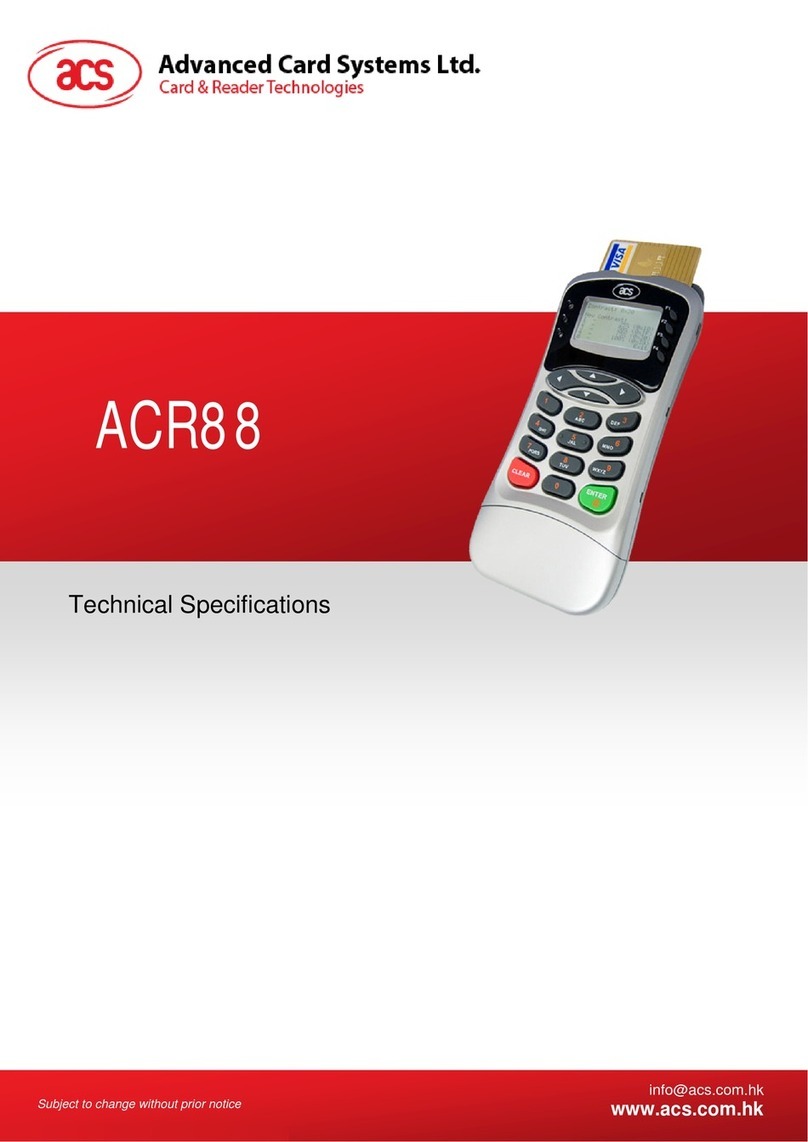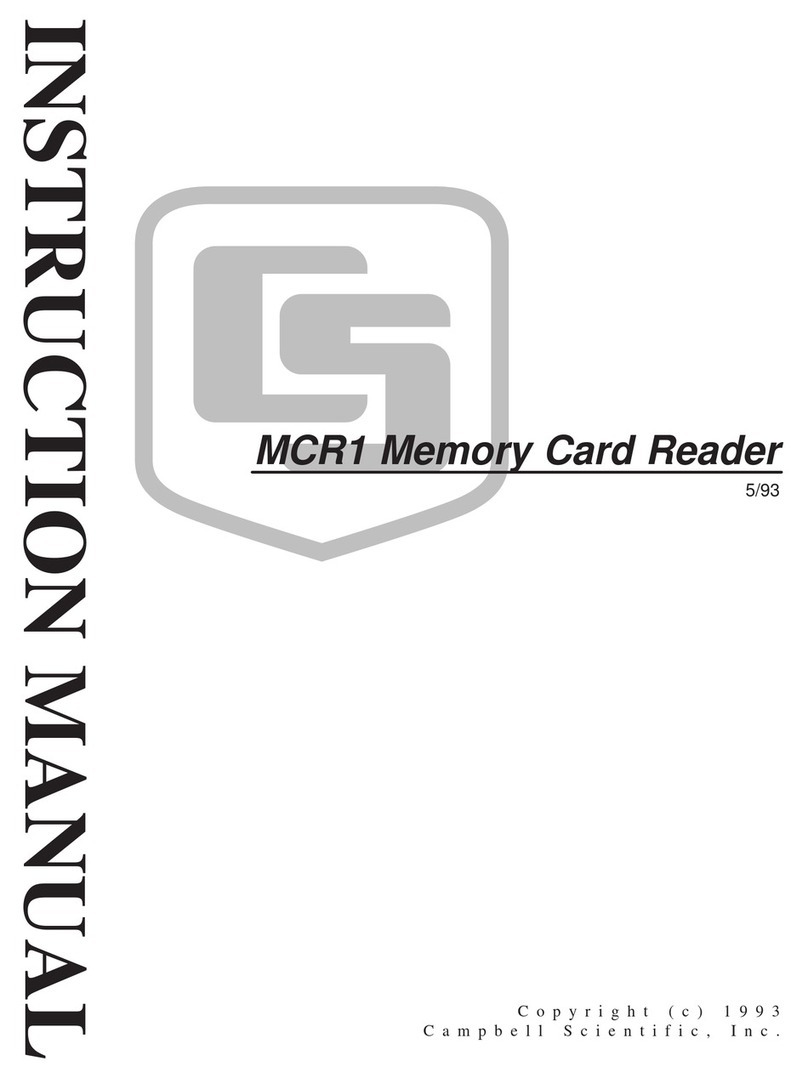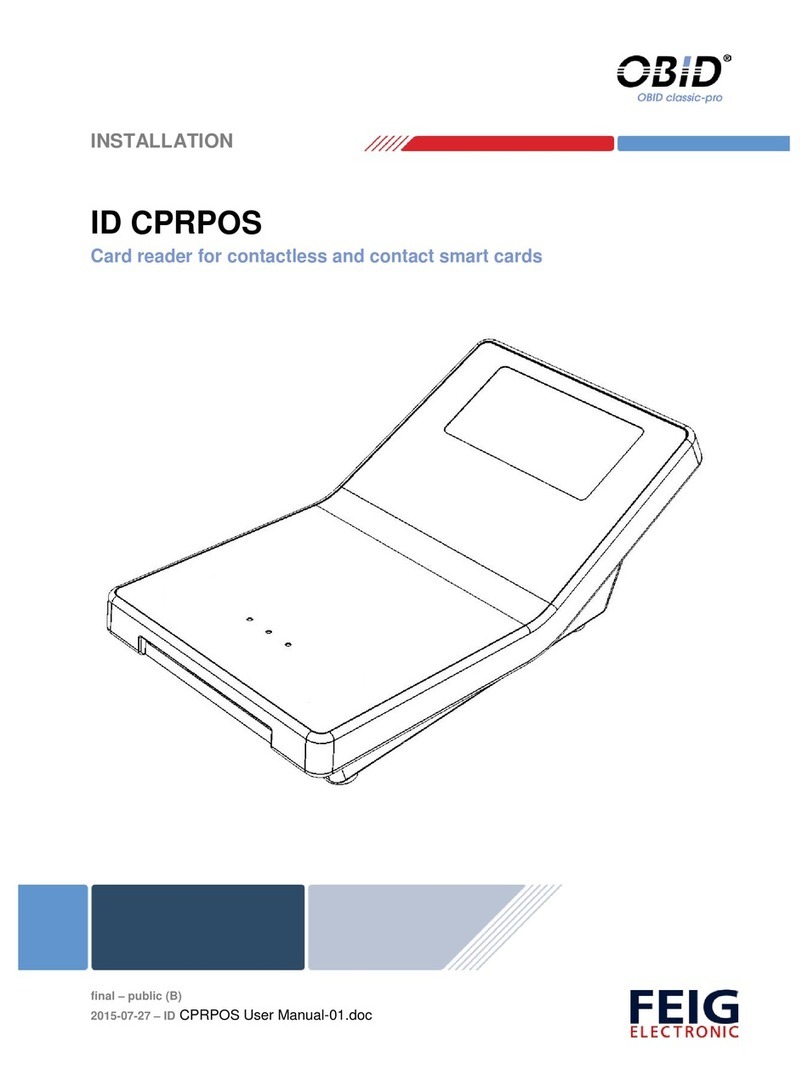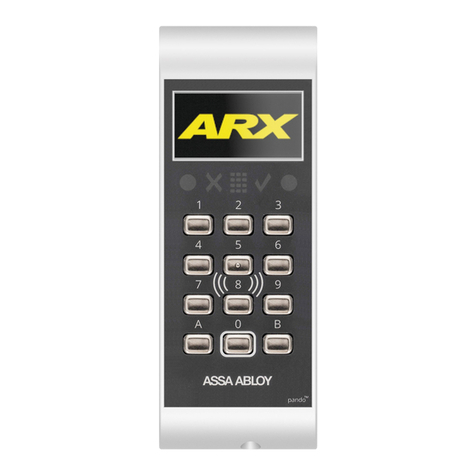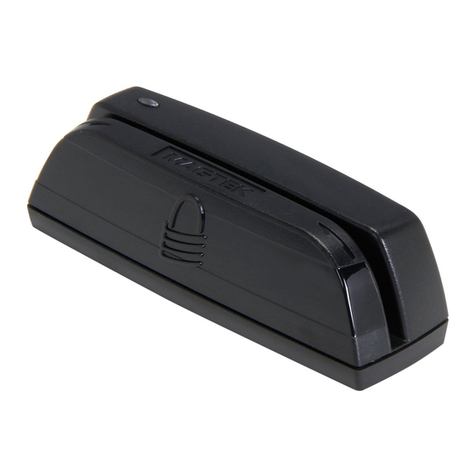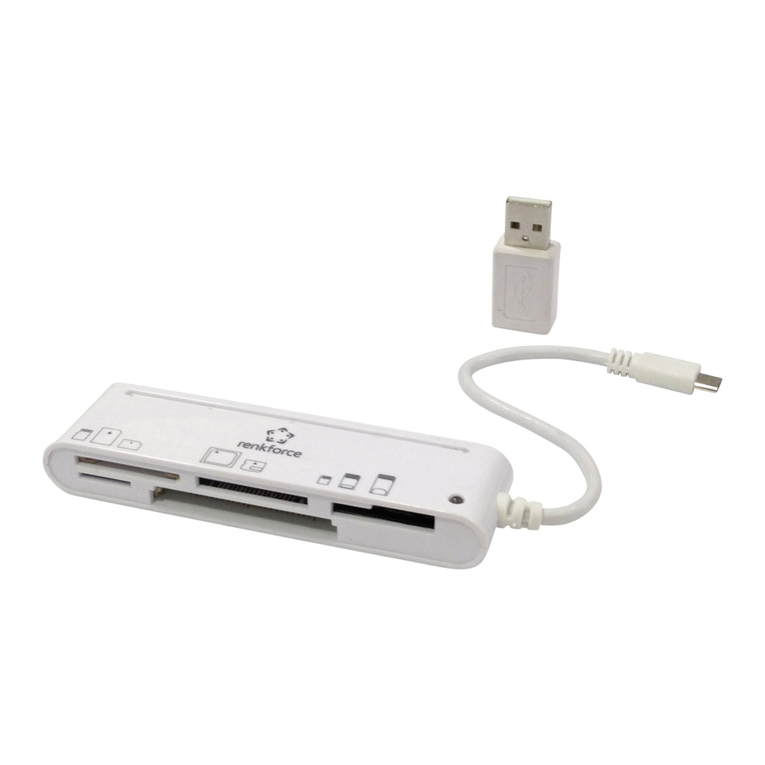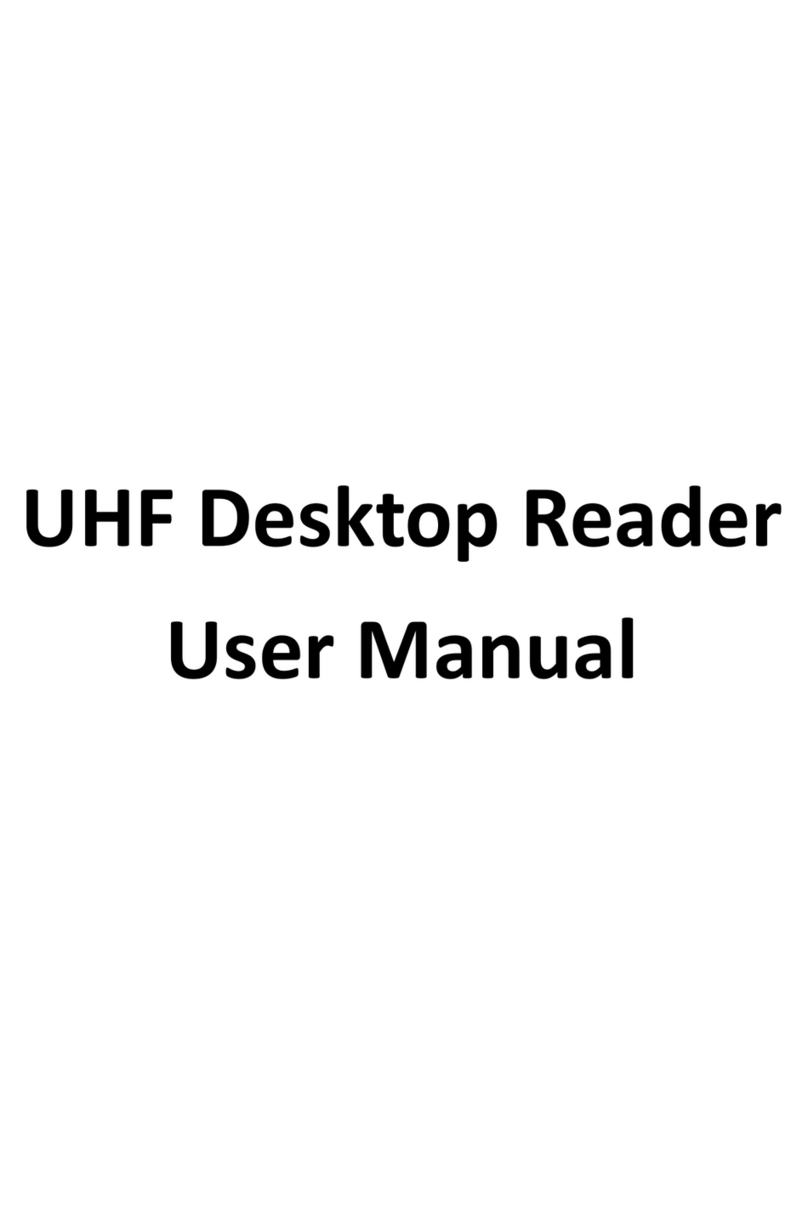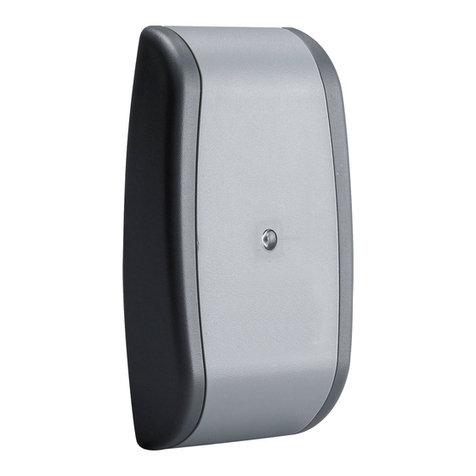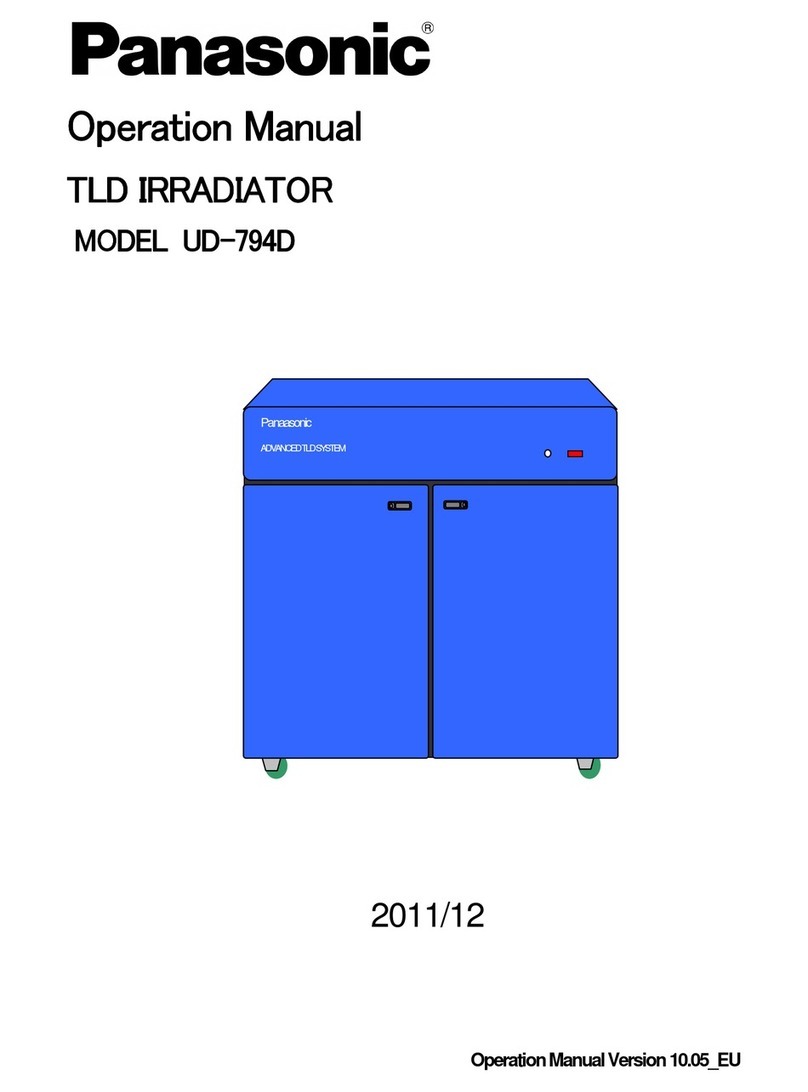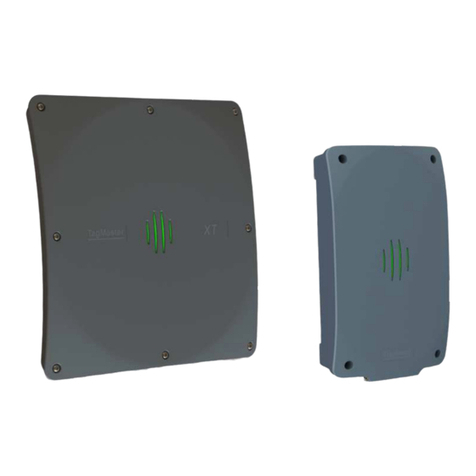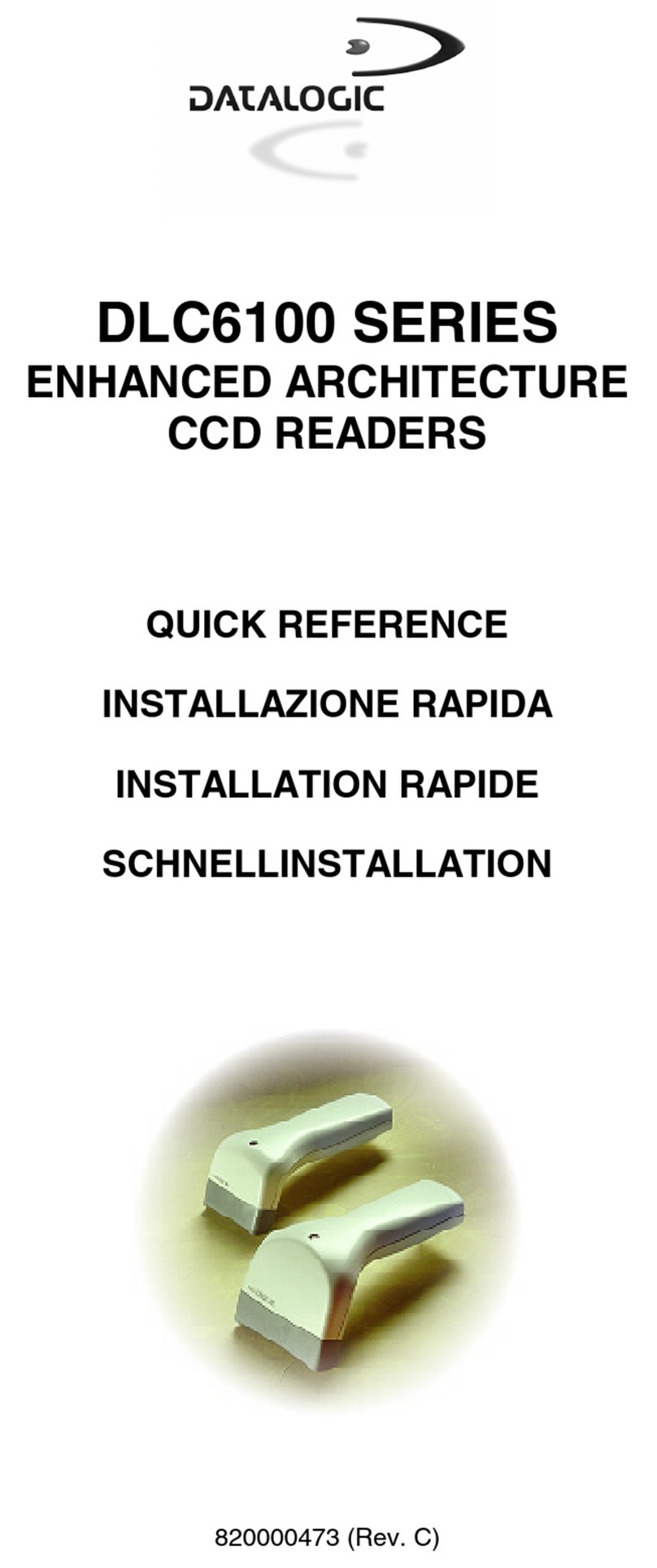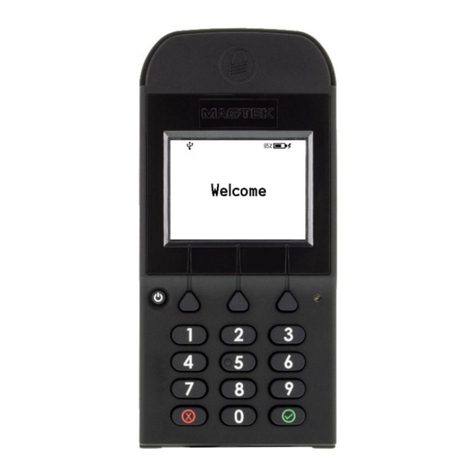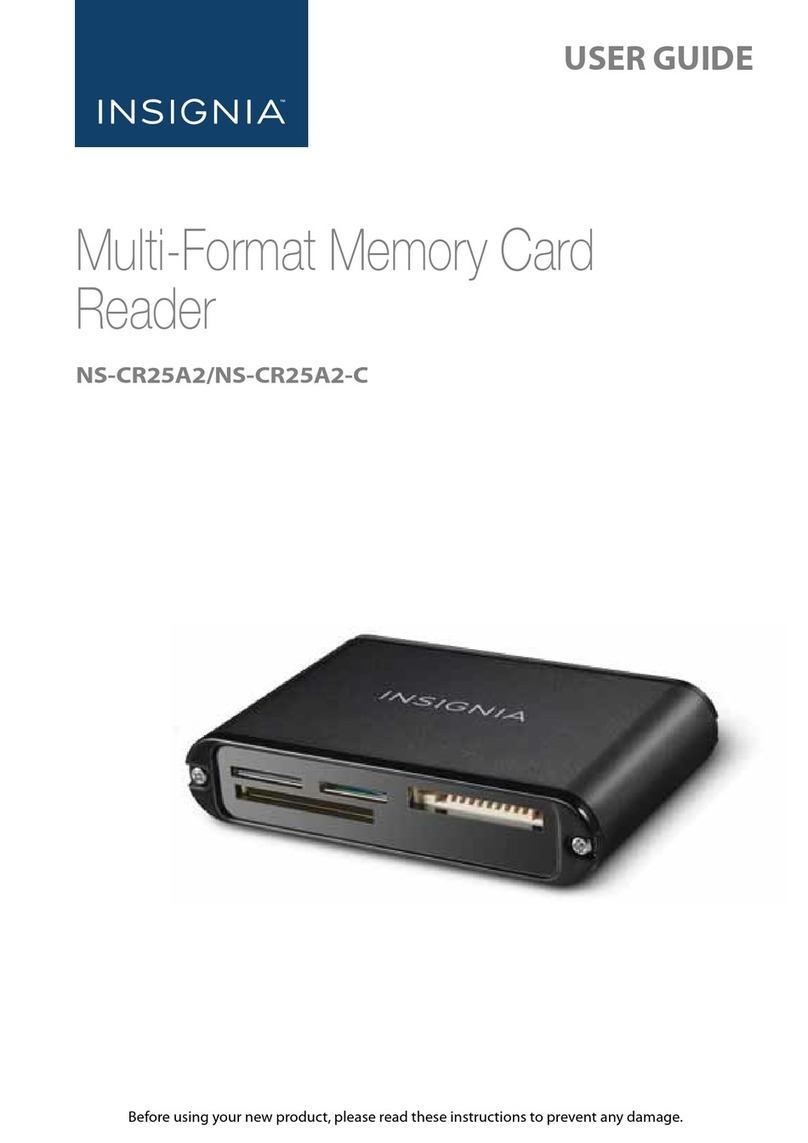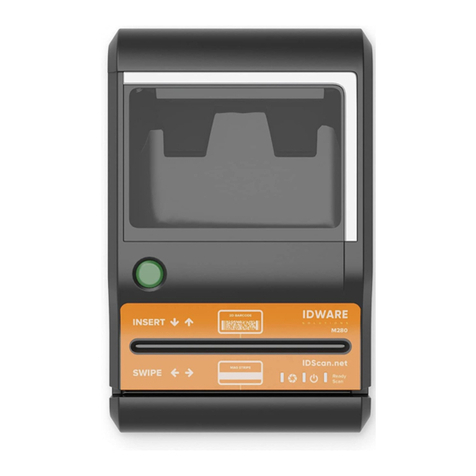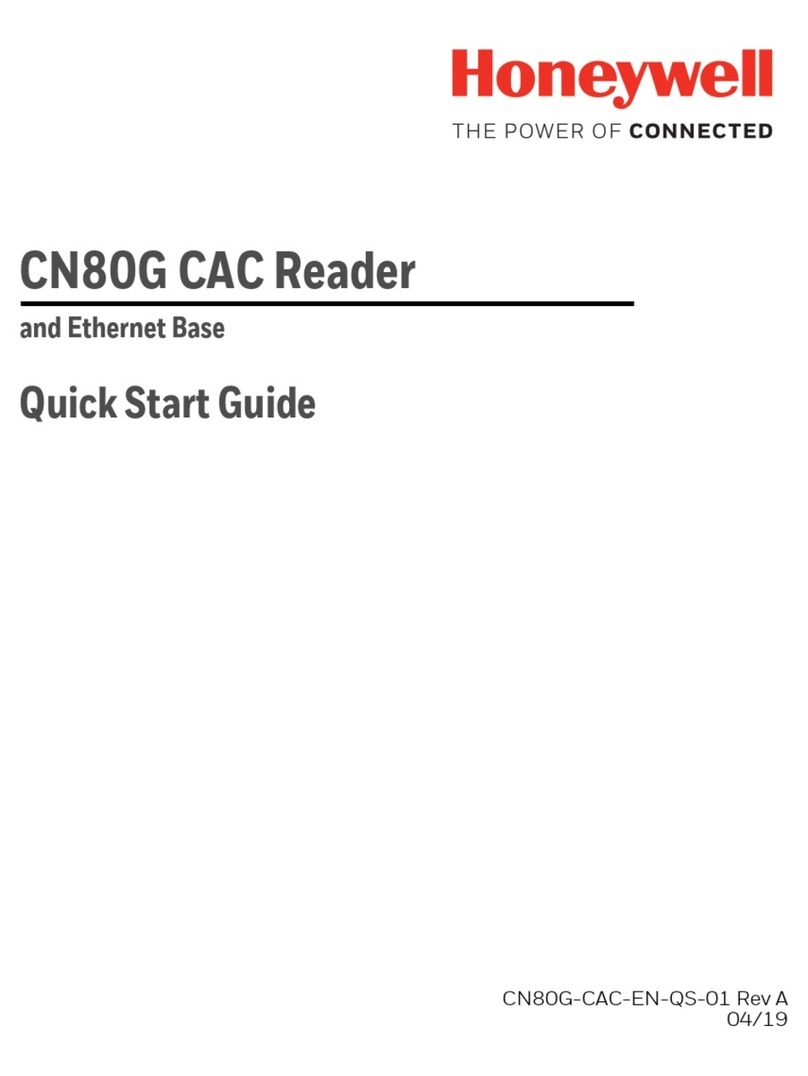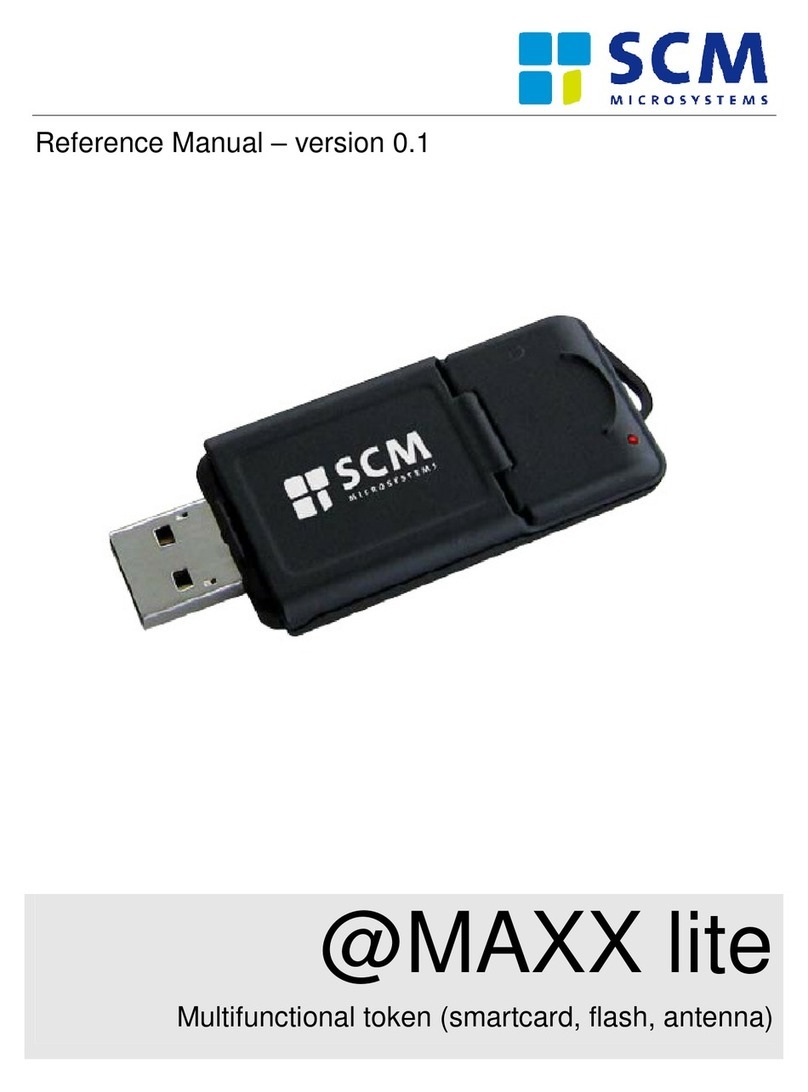Aerospace Innotech SAAT-F805 User manual

Version:V2.0.0
RFID Reader
User Manual

Dear Customers:
Thanks for your trust and support! We will be happy to provide you with comprehensive
service and technical support.
This manual will introduce the specific using methods of our reader SAAT-F805 to you you.
In order to operate the readers safely & efficiently and make full use of the functions &
features, please read this manual and the doc. in CD in details before installation. You will
experience the efficiency and convenience with our products.
Your comments & suggestions are warmly welcome during your operation on our products.
We will be always at your side.
Shenzhen Aerospace Innotech Corporation Limited
Address: Floor 8, Block B, SZAAT Building,10th Road Kejinan,Hi-Tech Park,Nanshan District,
Shenzhen City,Guangdong Province of China
Post Code: 518057
Tel: +86-755-26727074
Fax: +86-755-26727070
Web: http://www.htrfid.com

This manual is suitable for the following readers:
When this manual is written it is supposed that readers have basic knowledge over RFID
and computer. The technical words, such as RFID, Radio Frequency & Ethernet etc in this
manual, are not specifically introduced. Please refer to other reference books or consult
our technical department for support.
The following marks would appear in our manual, the meaning are as below:
Warning
If it disobey the restricted operations or using environments, it might be harm to human
health or damage equipments.
Advice
Follow the advised instructions, the results might be better.

Table of Contents
Part I
Reader Introduction................................................................. ..........1
1.F805 Reader Introduction ...................................................................................1
2.Technical Parameter ...........................................................................................2
3.Reader Function Introduction..............................................................................2
3.1 System Function........................................................................................................................2
3.2 Tag Operation Function.............................................................................................................5
Part II Reader Structure and Interface........................................................6
1Reader Structure .................................................................................................6
2Reader Interface Specification ............................................................................6
2.1Front Panel..............................................................................................................................7
2.2Rear Panel...............................................................................................................................7
2.3Top Panel..............................................................................................................................10
2.4Bottom Panel ........................................................................................................................ 11
Part III Installation and Debugging ........................................................................................13
1Installation Notes...............................................................................................13
2Installation Preparation .....................................................................................14
3Installation Methods ..........................................................................................14
3.1.Fixing Reader .......................................................................................................................14
3.2.Connection Components.......................................................................................................15
3.3.Reader Parameter Configuration ..........................................................................................21
4Control Reader Operations ...............................................................................21
4.1Call API Function Package...................................................................................................21
4.2Transmit Data Stream...........................................................................................................21
Part IV Routine Maintenance and Repair .................................................23
Common fault analysis and solve method ...............................................................23
Part V RFID Integration Application........................................................ 28
1Application assembly explain ............................................................................28
1.1.Computer..............................................................................................................................28
1.2.Application software.............................................................................................................28
1.3.RF cable................................................................................................................................28
1.4.Antenna.................................................................................................................................29
1.5.Communication cable...........................................................................................................30
2Integration Application Reference .....................................................................31
2.1Signal disturbance issue........................................................................................................31
2.2RF Signal Attenuation /Reflex..............................................................................................31
2.1Optimization method............................................................................................................32
3Special Remind .................................................................................................33
3.1.The damage to human body..................................................................................................33
3.2.Disturbance by other devices................................................................................................34

II
3.3.Application in special situation ............................................................................................34
Part VI Transportation and Storage ........................................................35
1Transportation Requirements............................................................................35
2Storage Require ................................................................................................35
Part VII Packaging and Accessory.......................................................... 36
1Product Packaging ............................................................................................36
2Accessories.......................................................................................................36
Part VIII After Sales Service.....................................................................37
1After Sale Service................................................................................................37
2 Contact Information ..............................................................................................37

1
Part I
Reader Introduction
1. F805 Reader Introduction
F805 RFID reader is independently developed by Shenzhen Academy of Aerospace
Technology, aiming for ISO18000-6B and ISO1800-6C (EPC Class1 Gen2) protocol
standard. With the characteristics of long reading-range, stability & reliability, massive
functions and expandability, F805 could be applied in many applications: logistic control,
transportation management, asset management and plant supervision, and so on.
F805 reader provides multi communication interfaces, including RS-232, Ethernet and
USB interfaces. F805 also provides several expandable interfaces, RS-485, Wiegand
and CAN bus, and is capable of expanding GPRS module and other wireless data
transmission modules. This series reader has the functions of 2-channel IO input signal
detection and 4-channel IO signal controllable output. Considering of different
requirements on RFID systems, F805 is modular designed. Except for the default
firmware interfaces on F805, other interfaces are customizable.
F805 operates in UHF frequency band, RF index complying with relative standards on
UHF RFID devices, and it has been approved by the China Radio Management
Committee, approved code: 2008DP3325. Record info could be found on the website:
(http://www.srrc.org.cn/xhhzcx/Pages/WP_Search.aspx)

2
2. Technical Parameter
F805 Reader parameters as following:
Technical Parameters Description
Operating Frequency 920.75~927.25MHz, frequency band adjustable
Tag Protocol ISO18000-6B、ISO18000-6C (EPC Class1 Gen2)
FM Mode FHSS
Frequency Points 50 points (frequency points adjustable)
Data Transmission Ratio 40kbps
Antenna Port 4 SMA RF interface(Professional Installation)
They have the same structure and circuit and at any time there is only a
antenna for transmitting and receiving. Antenna gain is 5.5dBi
RF Power Output 27dBm @50Ωload
Reading Range 0~15m
Writing Range 0~5m
Communication Interface RS-232, USB2.0 and 10M/100M adaptive Ethernet interfaces
Expandable Interface RS485, Wiegand 26/34
IO Port 4-channel output(2 for power adapter, 2 for relay), 2-channel input(level
detection)
Firmware Upgrade Support Serial Port
Status Indicator Indicators for built-in buzzer, power adapter / antenna / tag-identifying/
communication
Power Adaptor External Power Adapter(100~240V, 50/60Hz) AC input, 12V/3A DC input
Power Consumption 2W(standby), 10W(working)
Casing Material Aluminium-Magnesium alloy die-casting
Dimension 270 mm × 160 mm × 60mm
Weight < 2.0Kg
IP Rating IP54
Operating Temperature -20 ~60℃℃
Storage Temperature -40 ~80℃℃
Humidity 20%~90%(non-condensing)
3. Reader Function Introduction
This section illustrates functions and features of reader F805.
3.1 System Function
¾Multiple Communication Interfaces

3
F805 reader provides multiple communication interfaces catering for different application
environments:
yStandard RS-232 serial port, support speed range 9600~115200bps
yStandard 10M /100M Base-T Ethernet interface, support AUOTO-MIX function,
identify cross-line or straight line and automatically switches send/receive channels.
yStandard USB2.0 interface
¾Status Indicator
F805 reader provides the following status indicators: power, antenna selection and antenna
port carrier output, reading tag, data communication indications. At the same time, it is
equipped with buzzer to indicate reader operation status. For specific definition, Section
2.2.3 would introduce the panel on reader.
¾Reader Name Configuration
User can set different name for each reader, and the set name could be stored and queried.
Through this function, user can fast and easily find the connection established readers in
different places, other than using IP address or label sticker to distinguish readers. This can
also establish user-friendly database management.
¾Antenna Port Disable and Enable
The four antenna ports of F805 reader can be set as forbidden or allowed to use.
When host computer is using a forbidden antenna port to operate, the reader would reject
and return error code. In order to prevent a port without antenna operating, this would result
in error operation or even damage to devices.
When a reader is operating on tags in port rolling query method, the reader would select the
allowed ports and neglect the forbidden ones.
¾Independent Antenna Port Power Configuration
The four antenna ports of F805 reader could be set with different power output parameter.
When reader switches from one port to another, the power output is also transmitted into
the appropriate port value. This feature enables users to configure appropriate power
output for different antenna, when they are doing multi-antenna applications to optimize the
system.

4
¾Independent Antenna Port Cycling Query Time Configuration
The four antenna ports of F805 reader could be set with different query time. This feature
enables users to configure appropriate working time for different antenna, when they are
using cycling query for tag operation to optimize the system.
¾Modify Ethernet Configuration Parameter In Real-time
After modify the Ethernet configuration parameters of reader such as IP address, the reader
would simultaneously update the parameter. It doesn't need restart or re-power.
When using the Ethernet connection to modify Ethernet configuration parameters, the
reader will use the original Ethernet configuration parameters to maintain connection and
communication, until the current connection is cut off. The reader Ethernet configuration is
immediately updated when it is cut off, and the host computer will use new Ethernet
configuration parameters to establish connection with reader.
When using other connecting methods to modify the Ethernet configuration parameters, the
Ethernet configuration parameters will be updated immediately.
¾Adaptive Reading Time
When a reader is continuously operating on tags, use the interval reading mode to reduce
power consumption and to decrease interference with other devices. F805 reader will
automatically adjust the interval according to actual working status. When there's no tag
within RF environment, it will auto-adjust to standby monitoring status and increase the
interval; when detected tags within the RF range, the interval will be reduced. Through this
way, the power consumption and tag operation efficiency is achieved.
¾Control IO Output
Reader provides 4 IO output interfaces: 2-way MOS controlling power output and 300mA
output current, can be used for signal control or be used as power supply for other devices;
the other two for the relay control output, providing 220V/500mA current control.
The 4-way IO output can independently control the output status, input status including:
high level, low level, positive pulse and negative pulse.
¾IO Input Detection
Reader provides 2-way IO input detection function, which can detect IO input level status

5
and return to the computer.
3.2 Tag Operation Function
¾Tag Filtering
Reader can be configured to support the label filtering. After start the tag filtering function, if
reader gets a tag ID and sends to host computer successfully, within the configured time
reader would filter the same tag ID, and it will send the tag ID again when the configured
time out. This feature can reduce the duplication of the tag information on the network
congestion and control computer data processing burden.
This function has two parameters can be configured:
1) Filtering startup and shutdown;
2) Filtering time configuration, range from 100 milliseconds to 2 minutes.
¾ISO18000-6B Tag Function
Reader can read tags which are compatible with ISO18000-6B protocol, and read UID code
of ISO18000-6B tags, read/write data bank data, lock and lock status query.
¾ISO18000-6C Tag Function
Reader can read tags which are compatible with ISO18000-6C protocol, and read EPC
code of ISO18000-6C tags, read/write data bank data, lock and unlock.
¾EPC Length Adaptive
The EPC code length of ISO18000-6C protocol tag is changeable, and F805 can read/write
EPC code of different length.
¾TID Length Adaptive
The TID code of ISO18000-6C tag is 8bytes, while many tag manufacturers keep TID code
blank or only 4bytes. F805 can read TID code of different length.

6
PartII
Reader Structure and Interface
This chapter explains F805 reader structure, the external reader interface type and function
definitions in details.
1 Reader Structure
F805 reader casing is aluminum-magnesium alloy die cast, with better strength and EMC.
RF interface and communication interface work in a different panel, which is easy for wiring
and operation.
Pic.2-1 Reader Structure Dimension
2 Reader Interface Specification
This section explains the external interface of F805 panel for function definition and the

7
contents of the nameplate etc.
2.1 Front Panel
Front panel is RF interface panel, 4 of them is used for RF output antenna ports, using
standard SMA connectors.
Pic. 2-2 F805 Reader Front Panel Sketch Map
Interface Definition:
“1”-Antenna Port 1
“2”-Antenna Port 2
“3”-Antenna Port 3
“4”-Antenna Port 4
When reader works, the antenna port must be connected to
standard 50Ωantenna. If the port is not connected with antenna
a 50Ωload is necessary, and set to be disabled, otherwise it
could damage RF part of the reader circuit!
2.2 Rear Panel
Rear panel includes power connector and communication interface, to supply power for
reader, and communications capabilities of computer or control equipments.

8
Pic. 2-3 F805 Reader Rear Panel Sketch Map
Interface Definition:
“1”-DC power input port, standard XS-12 air connector
“2”-Ethernet interface, standard RF-45, with network status indicator
yYellow: Ethernet interface connection is normal;
yGreen: Flashing indicates Ethernet interface is sending and receiving data
“3”-USB interface, standard Type-B USB interface block
“4”-RS-232 interface, standard DB9(female type) interface block. Pin number, signal name
and signal flow of identification are as following (Pin number and DB9 socket marked with
the same number):
Table 2-1 DB9 interface pin marks
Pin Number Signal Name Signal Flow
2 RXD RS-232 data input
3 TXD RS-232 data output
5 Gnd Grounding
“5”- Expansion interface, using 14-bit standard EU regulation terminal for expanding other
interfaces, and communicate with external device and IO input / output control function.
Optional extension of a three-cable serial bus interface, two MOS output interface of control,
two relay control outputs and two IO input test interface. Extension interface shown in Pic.
2-4.

9
Pic.2-4 F805 Reader Expansion Interface Sketch Map
¾1, 2, 3 are serial bus interfaces for expansion, marked "BUS". Expansion board is
installed according to the internal differences can be configured for RS-485, CAN bus and
Wiegand interface, it can also be expanded according to user needs to other interfaces, the
corresponding marks as shown in Table2-2.
Table.2-2 Corresponding Interface Marks
BUS “+” “-” “G”
RS-485 Line-A Line-B Grounding
CAN + - Grounding
Wiegand
Interface data1 data0 Grounding
*If there are other customized interfaces, they will be defined in the special document.
¾4, 5, 6 power output interfaces, under the control of the software can respectively output
300mA maximum current, the interface can be used to power external devices, and can
also be used as general IO output control interface.
Marks definition as following:
“V1” corresponds to No. 4, as power output interface 1;
“V2” corresponds to No. 5, as power output interface 2;
“” corresponds to No. 6, as power output interface grounding;

10
Please note that when using this interface to connect the
device's internal circuitry and load, avoiding connecting output
interfaces directly to ground for short-circuit or overload.
When use the output interface supply power to other devices,
please take care of the output power. When power beyond the
limit, reader would auto-cut off for circuit protection.
¾7, 8, 9, 10 are IO output ports, controlled by relay. Under the control of host computer,
they can execute open and close state. They can load 220V/500mA current.
Marks definition as following:
“OUT1” corresponds to 7 &8, as IO output port 1 and normal open status;
“OUT2” corresponds to 9 & 10, as IO output port 2 and normal open status;
¾11,12,13,14 are IO input ports, used for detecting external input level signal. The
inputting level: 0.5V~16V is high, and 0V~0.5V is low.
Marks definition as following:
“IN1” corresponds to 11 & 12, as IO input ports 1, "+" (11) marked as positive, "-" (12)
marked as negative.
“IN2” corresponds to 13 & 14, as IO output ports 2, "+" (13) marked as positive, "-" (14)
marked as negative.
IO input to the internal using opto-coupler for photoelectric
isolation; therefore, do not use voltage which is more than 16V
at both ends of input pins. If you have special needs please
contact SZAAT or our agent to provide solutions.
2.3 Top Panel

11
Pic.2-5 F805 Reader Top Panel Sketch Map
There are 6 LED indicators on the top panel of F805 reader. Each indicator has a
corresponding icon. Meaning of the numbers corresponding to the icon as follows:
y“1”-Power indicator, red and green, red means reader is using an external power supply,
and green means remaining unused.
y“2”-Antenna port 1, red and green, green means antenna is available for use, and red
means reader is using this antenna to transmit carrier or signal.
y“3”-Antenna port 2, red and green, green means antenna is available for use, and red
means reader is using this antenna to transmit carrier or signal.
y“4”-Antenna port 3, red and green, green means antenna is available for use, and red
means reader is using this antenna to transmit carrier or signal.
y“5”-Antenna port 1, red and green, green means antenna is available for use, and red
means reader is using this antenna to transmit carrier or signal.
y“6”-Decoding, red and green, green means reader reads tag correctly, and red means
remaining unused.
F805 reader is equipped with buzzer for indicating working status.
If reader starts and self-tests normally, the buzzer will sound three short beeps. If the
system self-testing fails, the buzzer will be sounding five long beeps.
If reader internal setup success, the buzzer will sound a short beep.
2.4 Bottom Panel
Pic. 3-6 F805 Reader Bottom Panel Sketch Map

12
There are 4 mounting interfaces on the bottom panel, for installing the reader on the
mounting bracket.
There are nameplate, reader model, product serial number and manufacturer information,
etc on the bottom panel.

13
Part III
Installation and
Debugging
Please carefully read this chapter before installation and debugging F805 reader.
1 Installation Notes
To ensure your personal & property security and equipment running well, before installing
F805 reader, do the following preparations:
¾Understanding of local power supply parameters; check the whether the voltage and
frequency range comply with local power line.
Under some circumstance, due to electrical load or other
reasons, voltage range may be greater volatility, understand the working
environment carefully and the actual working state of power supply voltage
before using.
¾Please use the three-phase power socket and ensure a good grounding!
¾For an outdoor environment, the installing location of reader should be rain, moisture and
sun proof, well-ventilated.
¾The reader must be pre-tested for proper installation.
¾Before installation, measure the distance between reader and components (such as
between reader and antenna, reader and computer, reader and power plug), to buy cable
and plan system reasonably.
¾Note the transmission distance limitations and type of the serial cable / USB cable /
network cable (straight line, cross line); If you use a relay device, please note that the actual
total length of the relay equipment and delay of data transmission.
¾Check the working environment of reader and tag whether there are some factors
existing between reader and tags, such as some large metal objects blocking or reflecting.
¾Carefully analyze the work electromagnetic environment of working place before

14
installation, and check whether there are some special restrictions on wireless equipments
(such as hospital, airport). Knowing what are the devices working range within
900~960MHz (such as GSM base station), in order to reasonably configure the frequency
and power of reader, if necessary it is recommended to use additional filtering components.
If user has no sufficient experience at this, please feel free to contact HTRFID or its agent.
¾
When installing several readers under the same environment, please take care of the
fixing methods and minimum distance between antennae, the frequency configuration to
avoid interfering.
2 Installation Preparation
Before installing F805 reader, please check the intactness of product function and
completeness of files carefully. If there is any damage or shortage, please contact local
supplier for replacement. Except for these, check whether the reader complies with the
following installation conditions:
1.Meet the requirements of working environment (power and RF environment);
2.The tested reader working normal, interfaces in good condition;
3.The accessories are complete, and reach the required standard to fulfill a complete
read/write application environment.
3 Installation Methods
The appropriate installation methods mainly depend on its location. Usually, the readers are
installed on the points where are safe and convenient for operation.
Antenna installation should try to avoid pointing to prolonged
personal staying location.
3.1. Fixing Reader
According to the working environment and different installing location, the F805 reader has
the following installation methods.

15
1.Desktop Installation
Put the reader on the work table, as Pic. 3-1
Be noted before choosing this installation method:
The reader and its cables would not be cut down by accident, and causing
disconnection or power cut off by incident.
If there's vibration or possibility of tilt, please take some fixing measures.
Pic.3-1 Desktop Installation
2.Wall Mount Installation
Make use of the accessories which F805 owns (mounting screws, nuts) to fix the reader on
wall or mounting bracket.
Prepare the mounting holes on wall or brackets based on the reader installing location, and
then screw the reader on wall or bracelets. As pic. 3-2 shows:
Pic.3-2 Wall Mount Installation
3.2.
Connection Components
Table of contents
